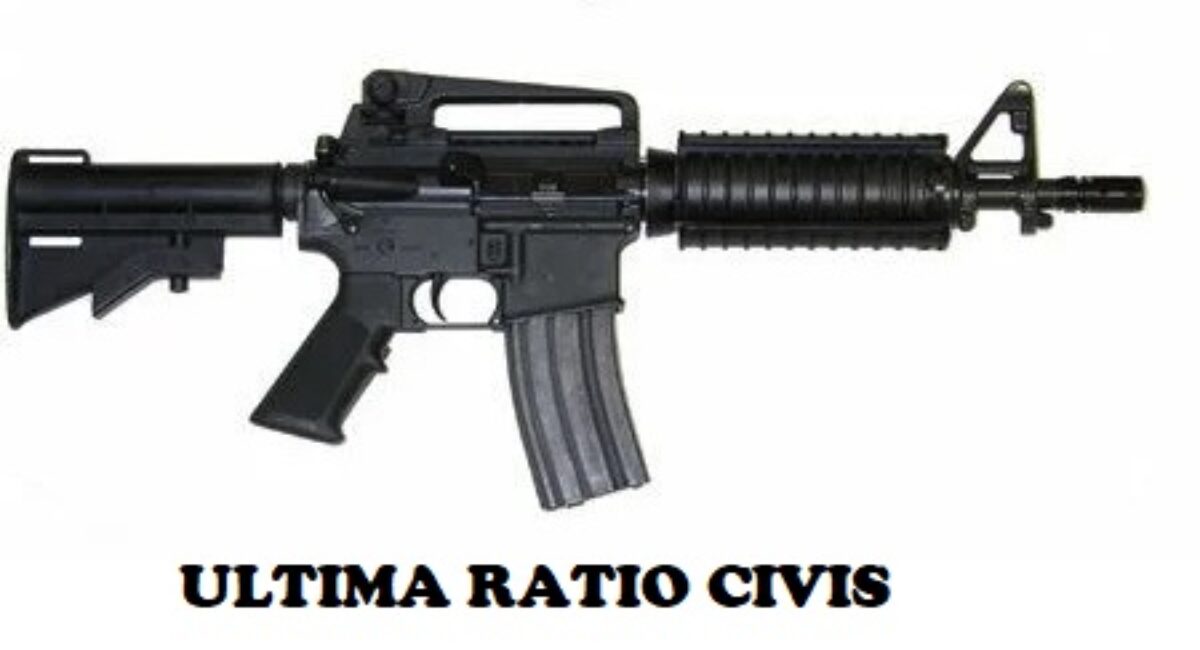Violent crime dropped by 48.6% in the U.S. in the same period that saw the record number of arms purchases: 423 million firearms, according to recently released data from the Bureau of Alcohol, Tobacco, Firearms, and Explosives.
Firearms-related accidents alone declined 68 percent between 1986 and 2018, a period in which U.S. citizens purchased 8.1 billion rounds of ammunition.
“These figures show that the United States has a strong desire to continue buying firearms for lawful purposes,” Joe Bertozzi, president of the National Shooting Sports Foundation, told American Military News.
“The continued popularity of guns demonstrates that Americans have a keen interest in protecting themselves and their homes,” he added.
American citizens have the right to defend themselves. They have been able to counteract crime as opposed to what is happening in Latin American countries where the hyper-regulation of arms has granted a monopoly to law enforcement, state security forces, and criminal groups that act above the law, such as organized crime groups.
Caracas, Venezuela, which lost the right to carry arms under Hugo Chavez, is the most striking example of the city with the most homicides. Now Mexico, with more than 100 homicides per day and the second most violent city in the world, Acapulco, is living through the most violent year in its history and shows how the rigid law restricting the bearing of arms leaves the law-abiding citizen vulnerable.
Meanwhile, in the United States, more and more citizens have legal access to firearms. More than 25 million people registered in 2019 to carry guns in the US.
According to the FBI, 202,465 people registered to buy weapons on the biggest selling day. The gun registry process involves authorities corroborating whether the person has a criminal record.
This was the second-highest figure in history. The highest was in 2017 when 203,086 people filed their information for review in a single >
Both historical dates coincided with “Black Friday,” which falls on the last weekend of November, the day when there are massive discounts across the country.
Compared to last year, there was an 11% increase in domestic sales. At the end of November 2018, there were 182,093 registered arms buyers. As Christmas and New Year approaches, the numbers continue to rise.
In rural states like North Dakota, the number of buyers
increased by up to 20%. According to Cody Schuh, owner of Shooters Inc., the political climate always contributes to a spike in sales. But he says this year was noteworthy. People not only stocked up on ammunition but also bought new rifles and pistols.
“Now we’re beginning to see that individuals buy weapons because they want to be safe without being told to do so by the state,” Schuh said.
It should be noted that the figures show the number of buyers, not the number of weapons. In October of this year alone, 1.2 million firearms were sold in the USA, 10.8% more than in October 2018.
Also, in October, the FBI reported that it reviewed the profiles of 2.4 million potential buyers, the highest record in a given month. In October last year, it was 2.3 million.
According to Small Arms Analytics and Forecast, 1.1 million firearms were sold in the U.S. in September of this year, 11% more than in September last year.
The U.S. Constitution guarantees the right to bear arms and overthrow an abusive government with a militia.
“What this tells us is that Americans vote with their wallets when it comes to the ability to exercise the Second Amendment,” said Mark Oliva, director of public relations for the National Shooting Sports Foundation.
Oliva says that this phenomenon is interesting, because contrary to the will of politicians who openly demand to restrict the Second Amendment, citizens are supplying themselves with weapons.
The Second Amendment to the Constitution speaks of the right of every American citizen not only to bear arms but to arm a militia if the government abuses its power and exceeds its functions.
Oliva considers FBI data to be the most accurate barometer when measuring arms sales and argues that this is not just a whim or coincidence but a “meaningful investment.”
He argues that U.S. citizens choose to invest their hard-earned money to exercise their rights, unlike the politicians seeking to restrict their ability to defend themselves.
The Democratic Party wants to remove Trump from power, but to deprive citizens of the right to rise against a tyrannical government.
For example, the Democratic Party demands greater control when carrying arms and has the backing of at least 150 companies that demanded greater control before the Senate. But sales show that millions of people disagree.
The irony is that the same party that seeks the removal of President Trump, whom they consider to be abusing his power, is the one that wants to deprive citizens of the ability to remove a tyrant from power.
This reflects the actions of the Democratic Party. They demand that the high and mighty state be the one to remove Trump from power, not “the people” they claim to represent.
Meanwhile, those with a more libertarian or conservative political orientation refuse to give more power to the state, much less to take away their right to self-defense.
For history has shown that every tyranny is established once it disarms its citizens. This is what happened in Cuba through Fidel Castro’s speech “Guns? For what?”
Sixty years later, Cuba is still run by the same family. Twenty-five million people in the U.S. showed with their weapons that they are not willing to risk the same thing happening in their country.
They are safer both from crime and the possibility of the emergence of tyranny. That is why they are literally in charge of their self-defense.



